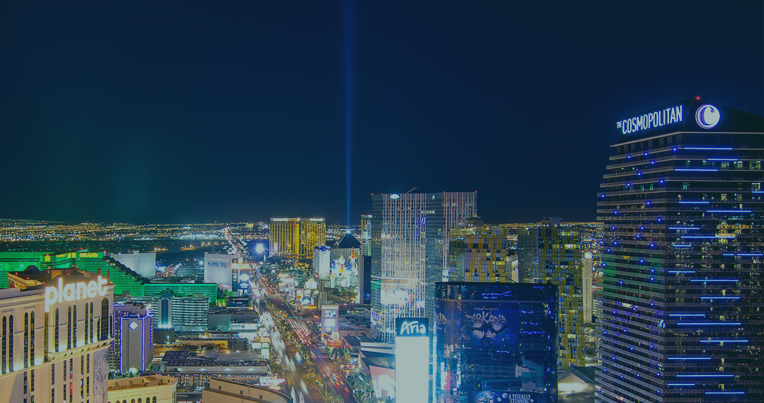There are millions of cannabis consumers spending their hard-earned money on the black market rather than legal sources. Although the cannabis industry understands the benefits of buying weed from the taxed and regulated sector, many consumers are oblivious. All they see when they step inside a cannabis dispensary is the high price tag. Many leave vowing never to return until the rate matches the street. A recent paper in the Journal of Studies on Alcohol and Drugs finds the consumer relies on two factors when making a marijuana purchase: price and ease of access. Researchers found the consumer was most likely to forgo the legal marketplace if they believed they could obtain cheaper products more conveniently from unregulated sources.
Cheaper, of course, typically doesn’t equate to better. On the contrary, most of the cannabis sold on the illicit market, while less costly, contains pesticides and dangerous microorganisms, none of which are fit for human consumption. There’s nothing better about getting poisoned just to save a few bucks. Tell that to the average consumer and they’ll likely argue that they’ve been smoking weed for years and the toxins haven’t killed them yet. Therefore, they won’t make the transition to the legal market. Many others aren’t even aware that there’s cause for concern. These unwitting buyers pretty much assume that the products they can get from the street are the same as what’s sold in legal dispensaries – just cheaper. However, that customer might see the light if the cannabis industry did a better job educating them before, during, and after the sale.
Every news source from Politico to the Spectator has published a report over the past year suggesting that marijuana legalization in the United States has failed. They argue that the legal market simply cannot compete with the illicit trade. And they’re right. Or at the very least, it’s tough to argue that the legal sector hasn’t experienced its share of challenges. Take California for example. Although the state was on track to become a model for nationwide legalization, various issues, namely a vibrant black market, continue to undermine what legalization was supposed to cure. Criminal organizations are arguably stronger now than ever before, responsible for an $8 billion-a-year black market. The cannabis industry believes, perhaps naively, that nationwide legalization is the remedy to the problems related to the black market; that changing the pot laws at the federal level would drive the consumer into the legal market for good.
But the industry can’t just sit around waiting for the discrepancy between legal and illegal to sort itself out. For starters, the political divisiveness on Capitol Hill will undoubtedly prevent a marijuana legalization bill from passing anytime soon. It could be “many years from now,” US Senator Cory Booker recently told NJ Spotlight News. Although there is a great deal of support for marijuana reform in Congress, the House and Senate remain too divided on the issue to drum up enough votes to forge ahead. Secondly, and perhaps most importantly, if we legalize marijuana at the federal level – a move that would give way to a fully legal American pot market, one that mimics the alcohol trade – that probably won’t destroy the black market either.
Just look at Canada. Five years after the country legalized marijuana for adults nationwide, the black market continues to thrive. Nearly 42% of Canadians admit to buying weed from illicit sources. Why should we expect the US cannabis consumer to act any differently? A recent article from High Times suggests that the black market is ensconced and isn’t likely to be brought down. Author Jon Cappetta, the publication’s VP of Content, writes that the “traditional market” (Black Market) isn’t going anywhere…ever. He agrees that taxes and regulations are partially to blame, but he also claims that the legal market’s inability to cater to the consumer the way the illicit market does has more to do with the illegal market being a permanent fixture.
“Until the quality of the product, or concern for the end user, matches that of the ‘lifers,’ we’re simply talking about two different ball games, despite the fact that they’re playing with the same equipment,” Cappetta wrote.
But we’re not playing with the same equipment. Ours is more sophisticated. Sure, the diehards on the illicit scene may be producing a quality product in terms of potency (another factor the consumers take into consideration before buying), but that’s about the extent of it. There are no regulatory safeguards in the traditional market to protect users from pesticides, mold, and fungus. It’s difficult enough to control these toxins on the legal market – the primary reason lab testing is required by law – so the consumer can almost guarantee they’re ingesting harsh chemicals when they purchase weed from illicit sources. Black market cannabis is often tainted with high levels of these toxins too. The same High Times article claims that illicit operations are even going as far as to spray cannabis buds with Raid (a common insecticide). If ingested through smoke or vaping, this chemical is known to cause irreversible neurological damage and even death.
“It’s true that one of my friends went blind briefly, but we all survived,” Cappetta wrote.
That should scare the daylights out of the consumer. The average marijuana customer should never be okay with the risk of temporary blindness or death just because they want to save a few bucks on weed. We’d venture to say that most would be appalled if they had any idea that they were smoking any kind of dangerous chemical. That’s the real benefit of legalization, knowing that all products undergo extensive testing for chemicals and fungus before they are distributed. All licensed producers must check their products and produce a Certificate of Analysis from an accredited lab, like Kaycha Labs. This piece of paper lets the consumer know that what they’re about to smoke won’t, as the tagline for Raid suggests, kill them dead. And hey, that’s a good thing.
The cannabis industry would be well advised to educate their customers every chance they get. Some reports suggest that state markets have stalled – so the customers you have now are all you’re going to get — which means that cannabis operations need to find a way to bring more of the illicit buyers over to the other side – the legal sector. We need to ensure that both existing customers and curious shoppers are well-informed when making their cannabis purchases. We need to teach them how legal products differ from what they’re getting on the street; explain how mold and fungus are prevalent and their health repercussions. We should make education part of the sales process. Show the consumer what they’re paying for and why safety is important. Above all, we need to show them why, despite the popular argument printed in major cannabis publications, smoking cannabis sprayed with Raid isn’t something that should be discounted. Perhaps cannabis sellers should also educate in their advertising campaigns.
Rather than try to sell the consumer a specific product, let’s show them the dangers of buying black market. Otherwise, the legal sector is going to continue losing market share to the criminal organizations.
Although High Times suggests that the cannabis industry “isn’t harmed” by the flourishing, indestructible black market, that’s not exactly accurate. Many smaller operations are being bought up by larger corporations or simply going out of business because they can’t afford to play the game. There are fees to participate in the legal market, and the IRS continues to collect upward of 70% in taxes. Black market players are not affected by these costs. All the legal market needs to remain competitive is to work consistently to persuade consumers to abandon the illicit market for their health. Even if there is no foreseeable end to the black market, educating the consumer could ensure that more gradually move over to the legal sector in the years to come, and that spells victory. We might not get them all now but facilitating consumer education is undoubtedly a crucial aspect of the retail experience, and it’s the one that stands the best chance at furthering the transition from the underground to the mainstream.













